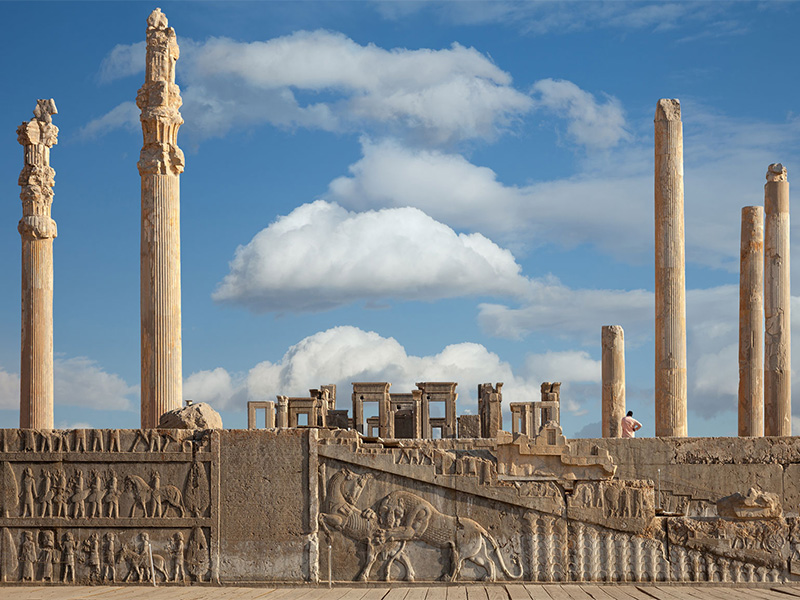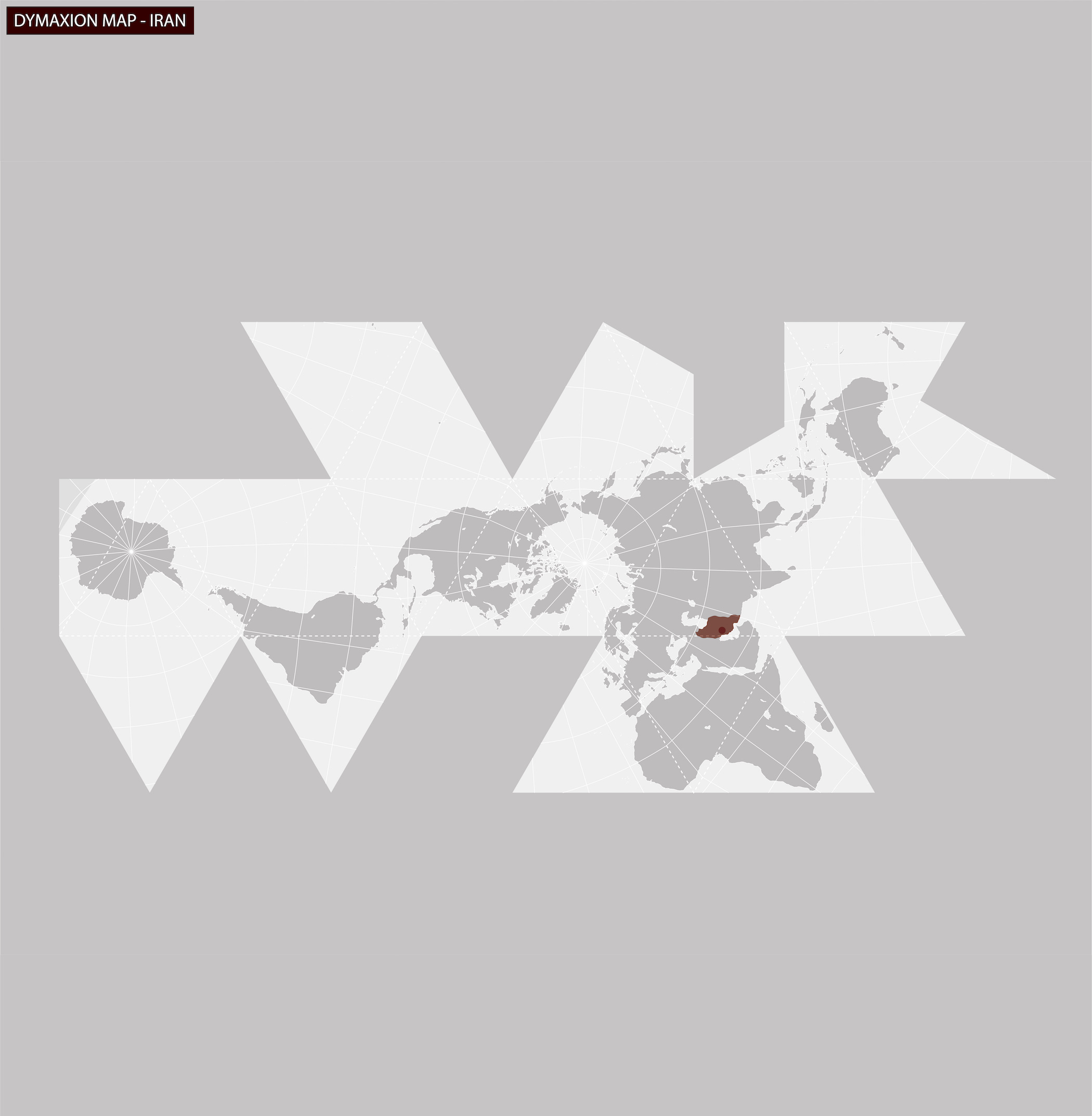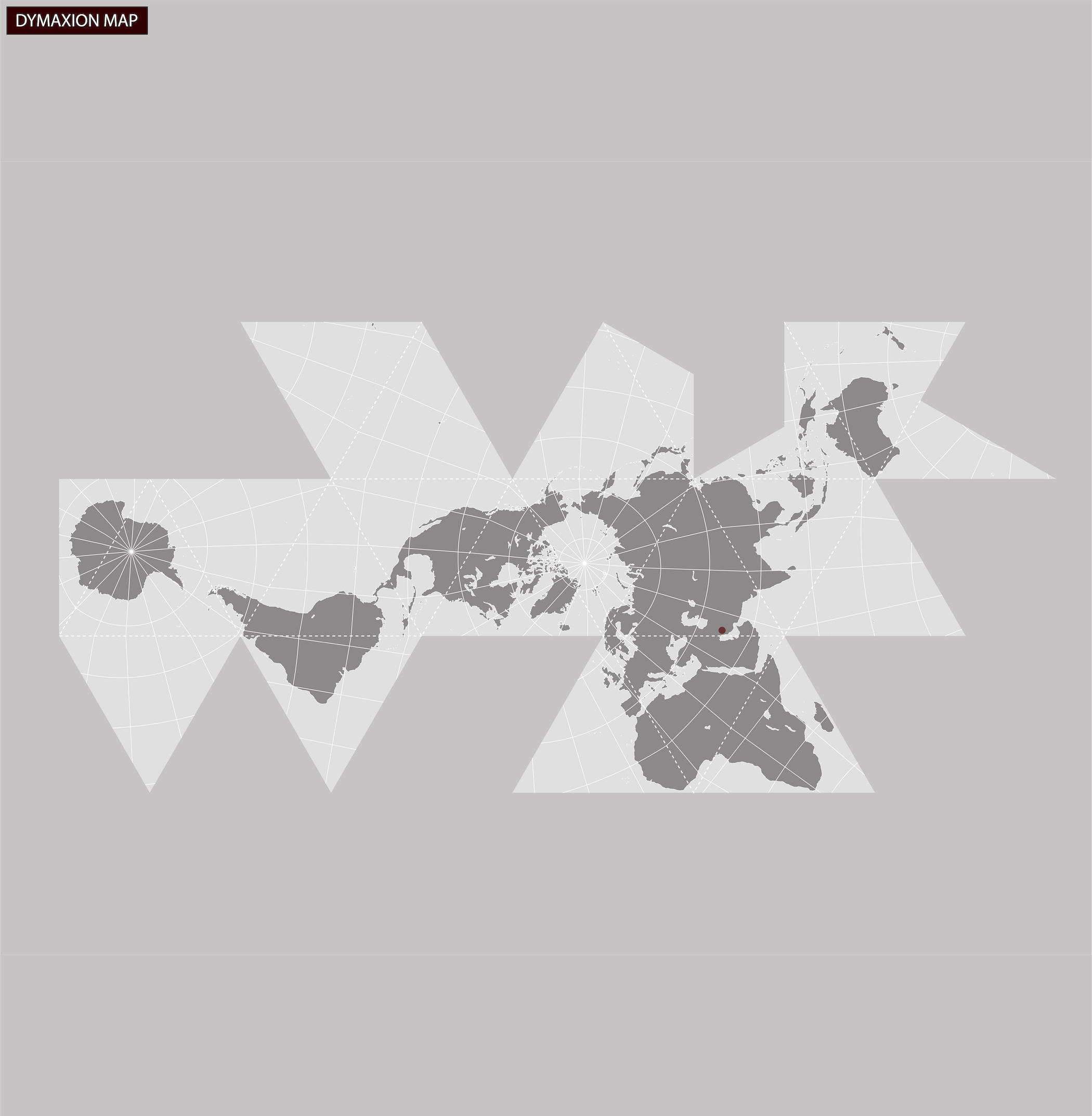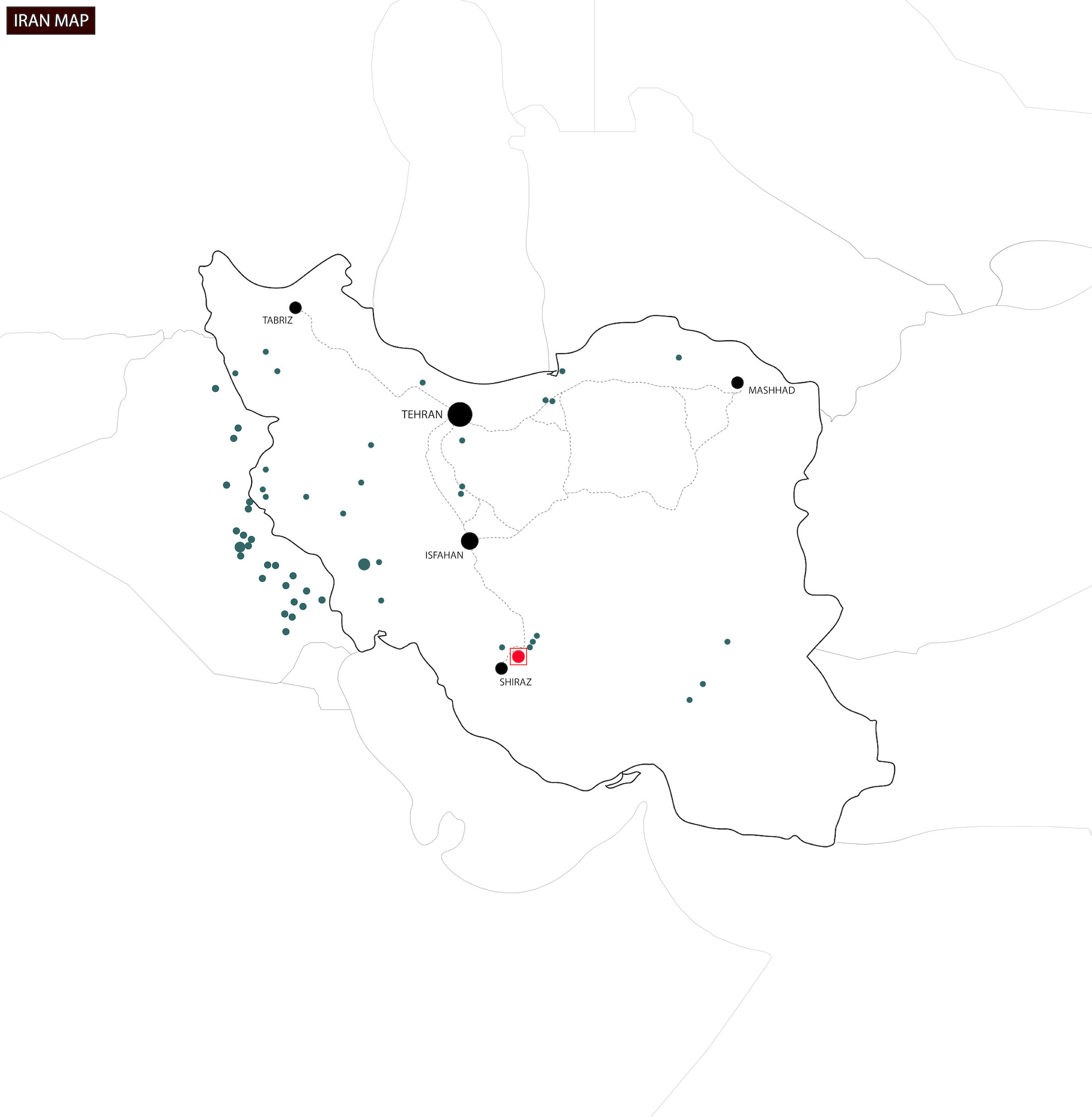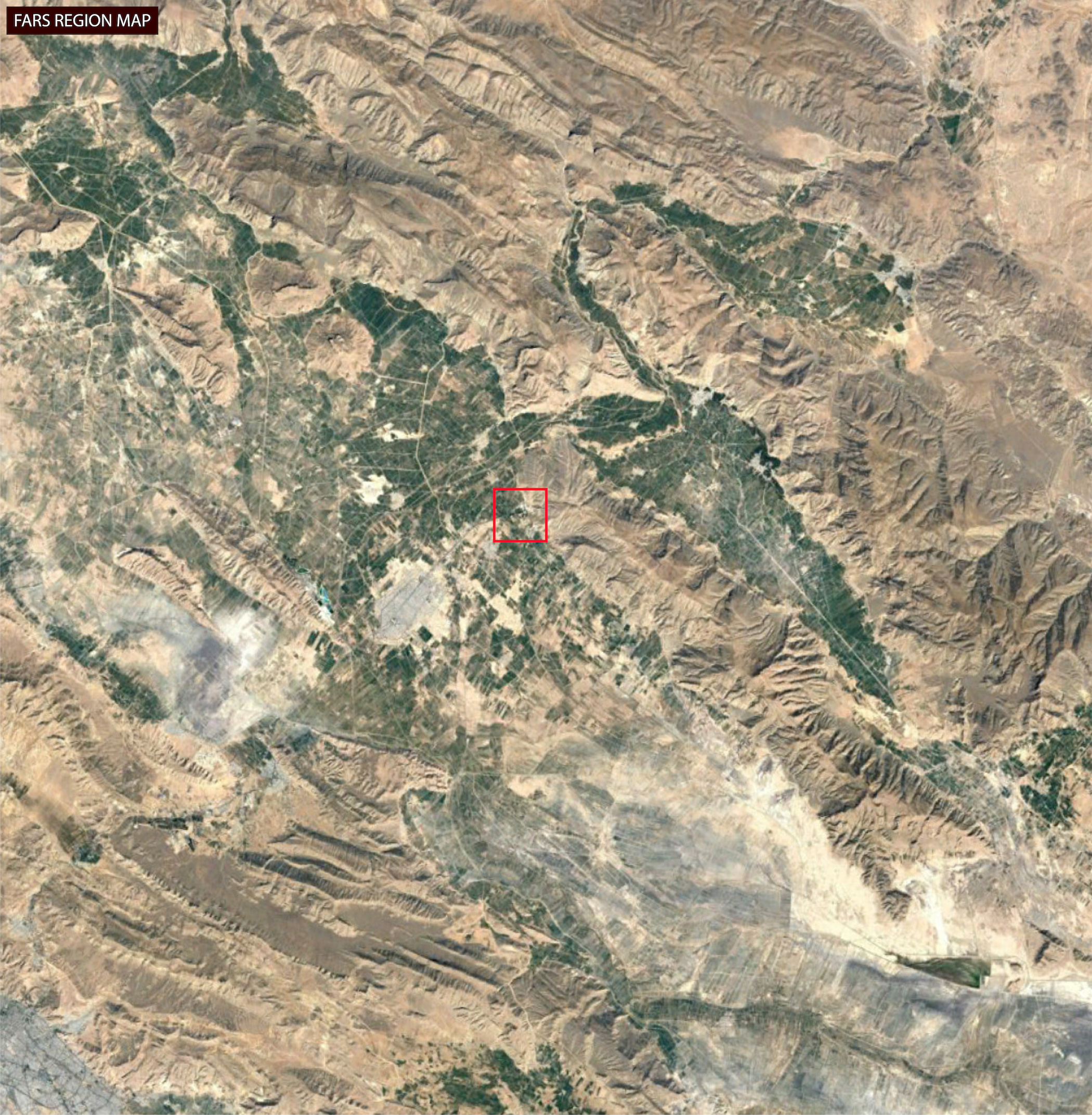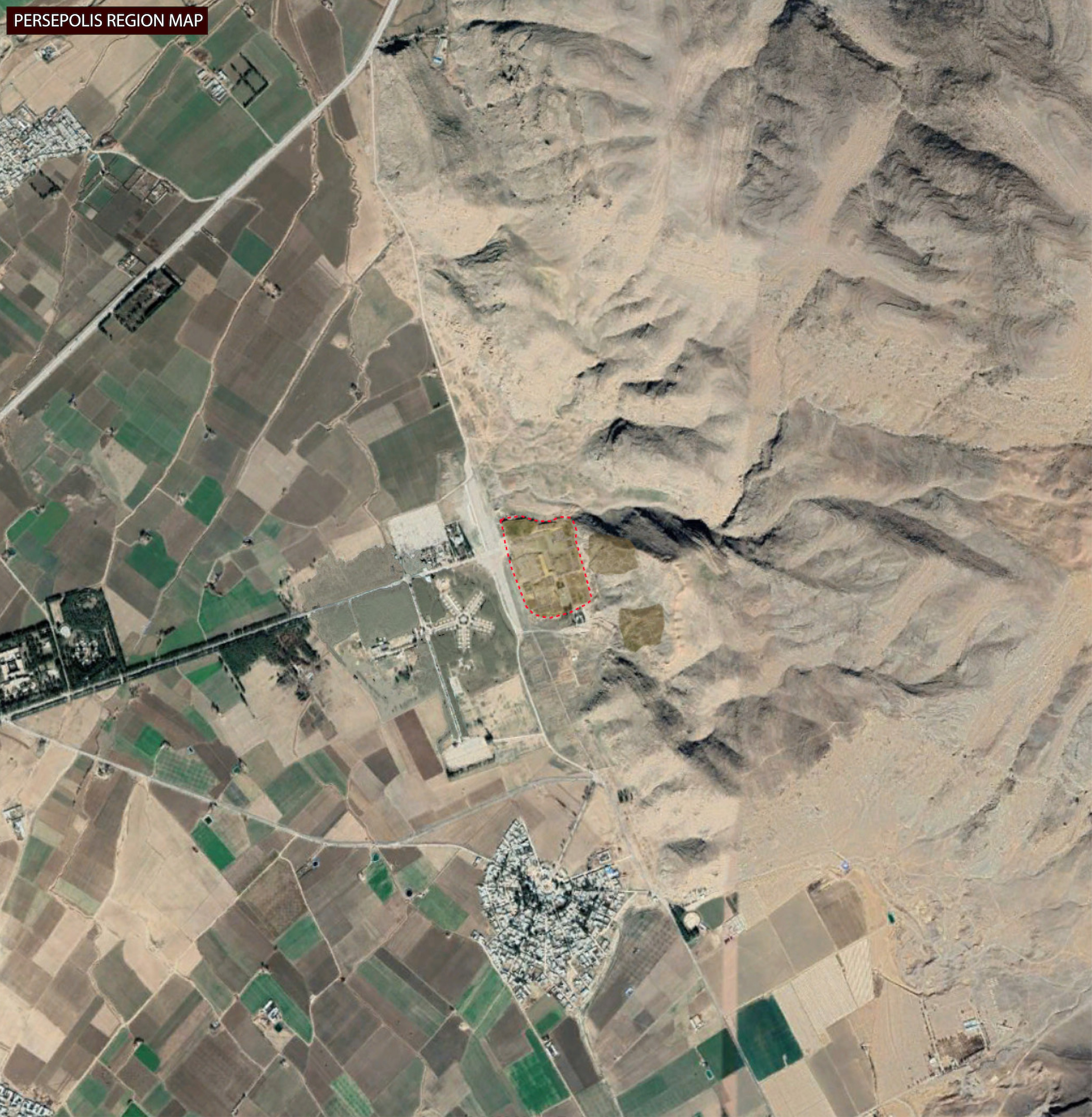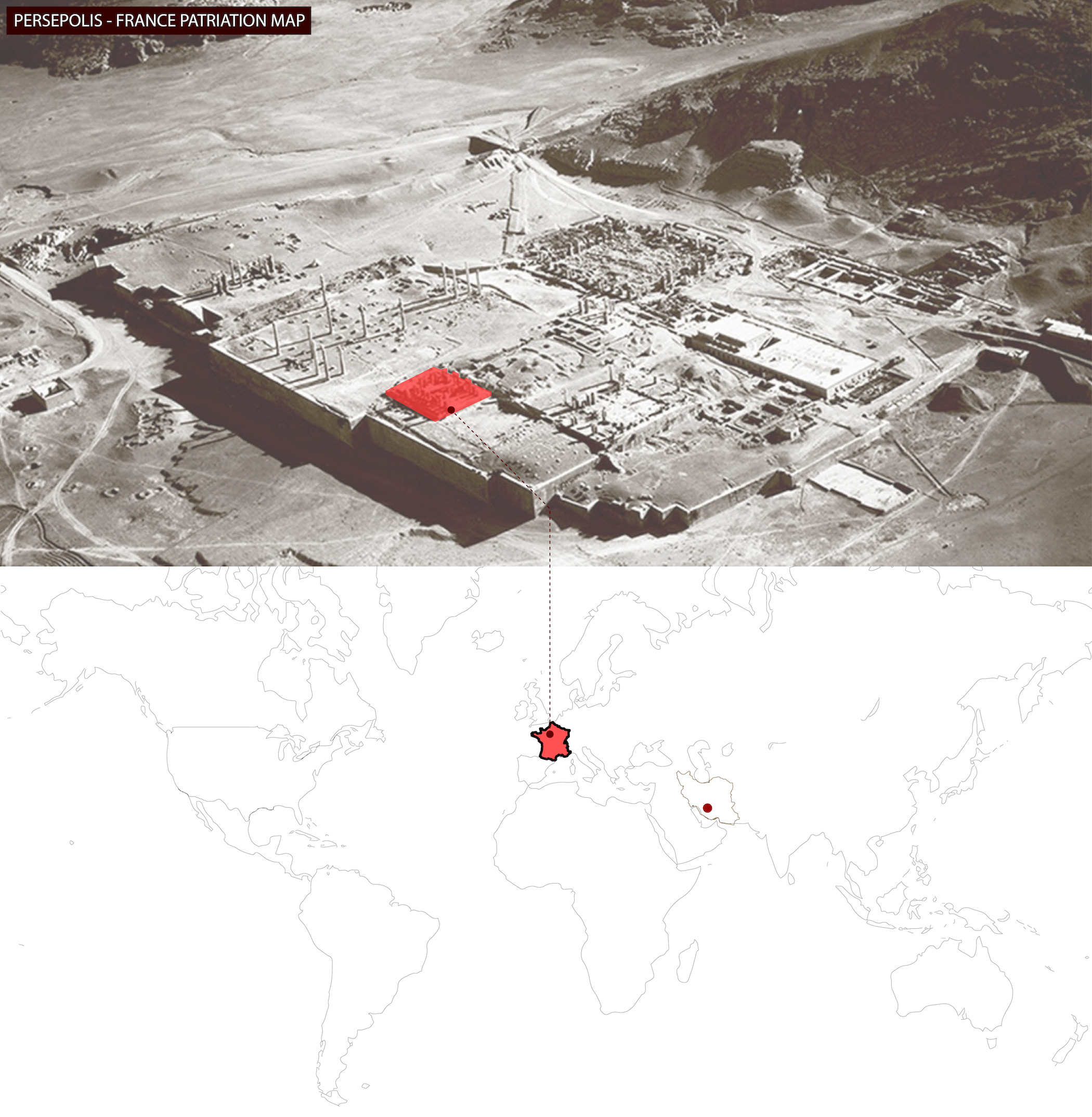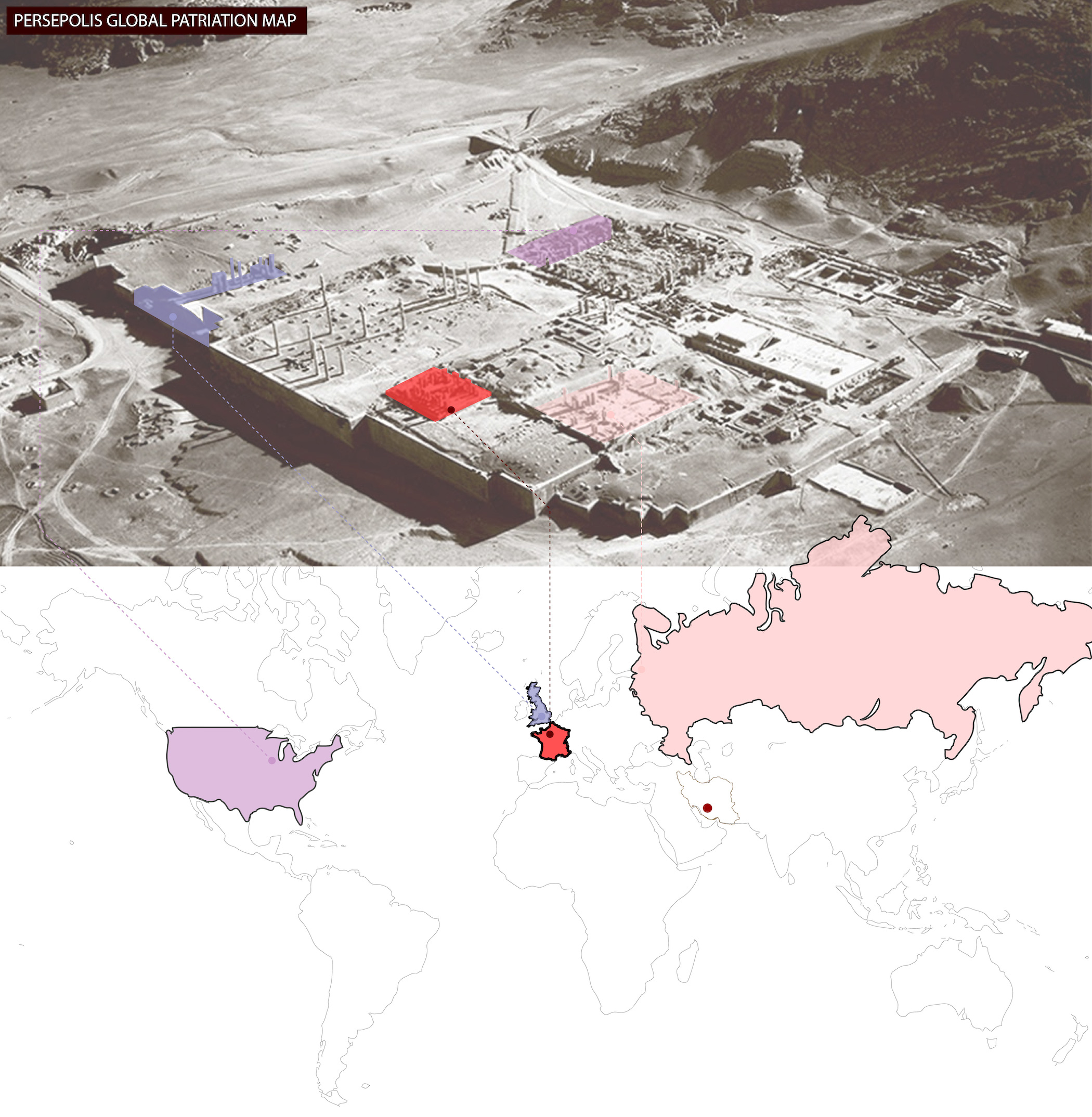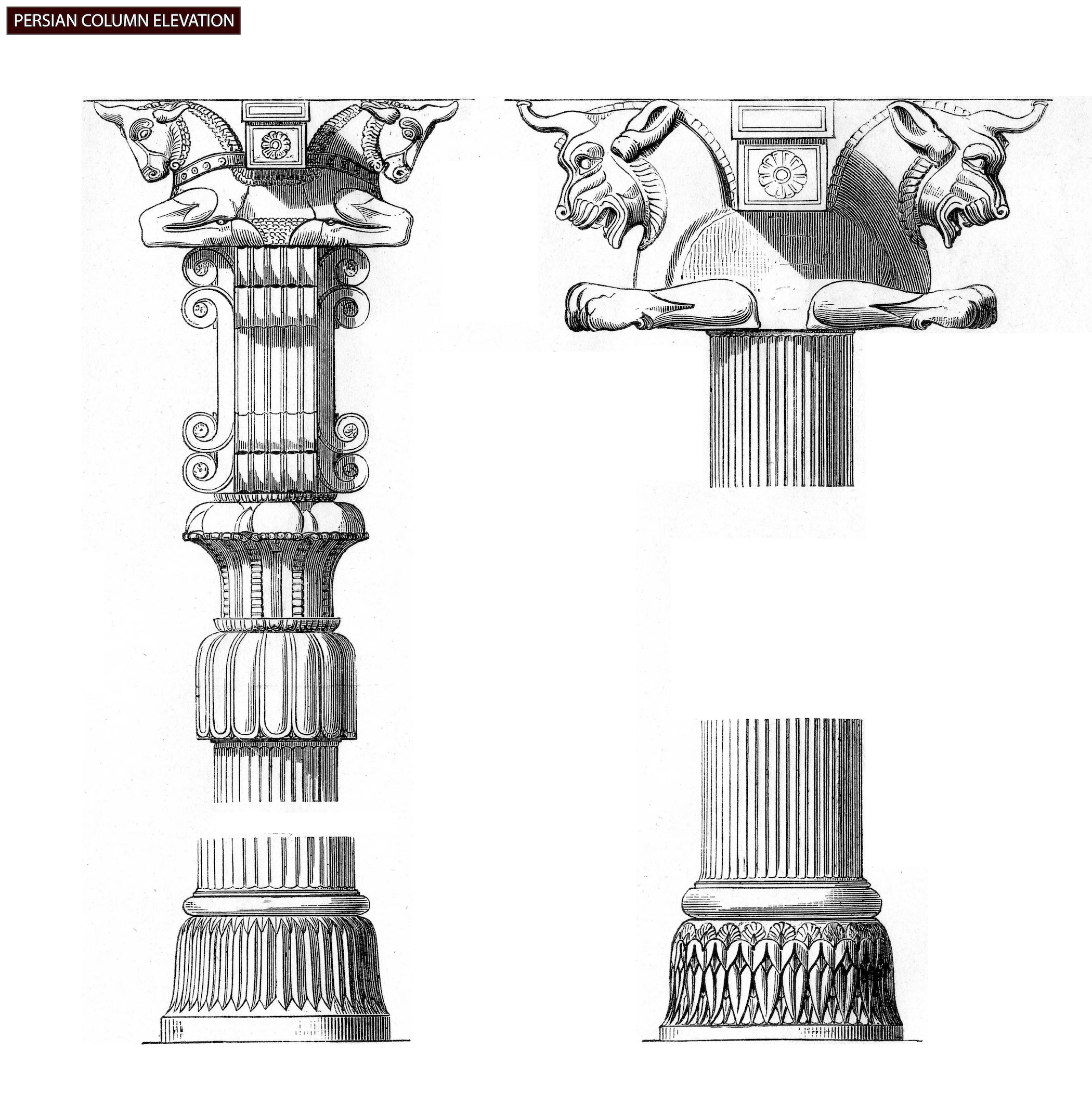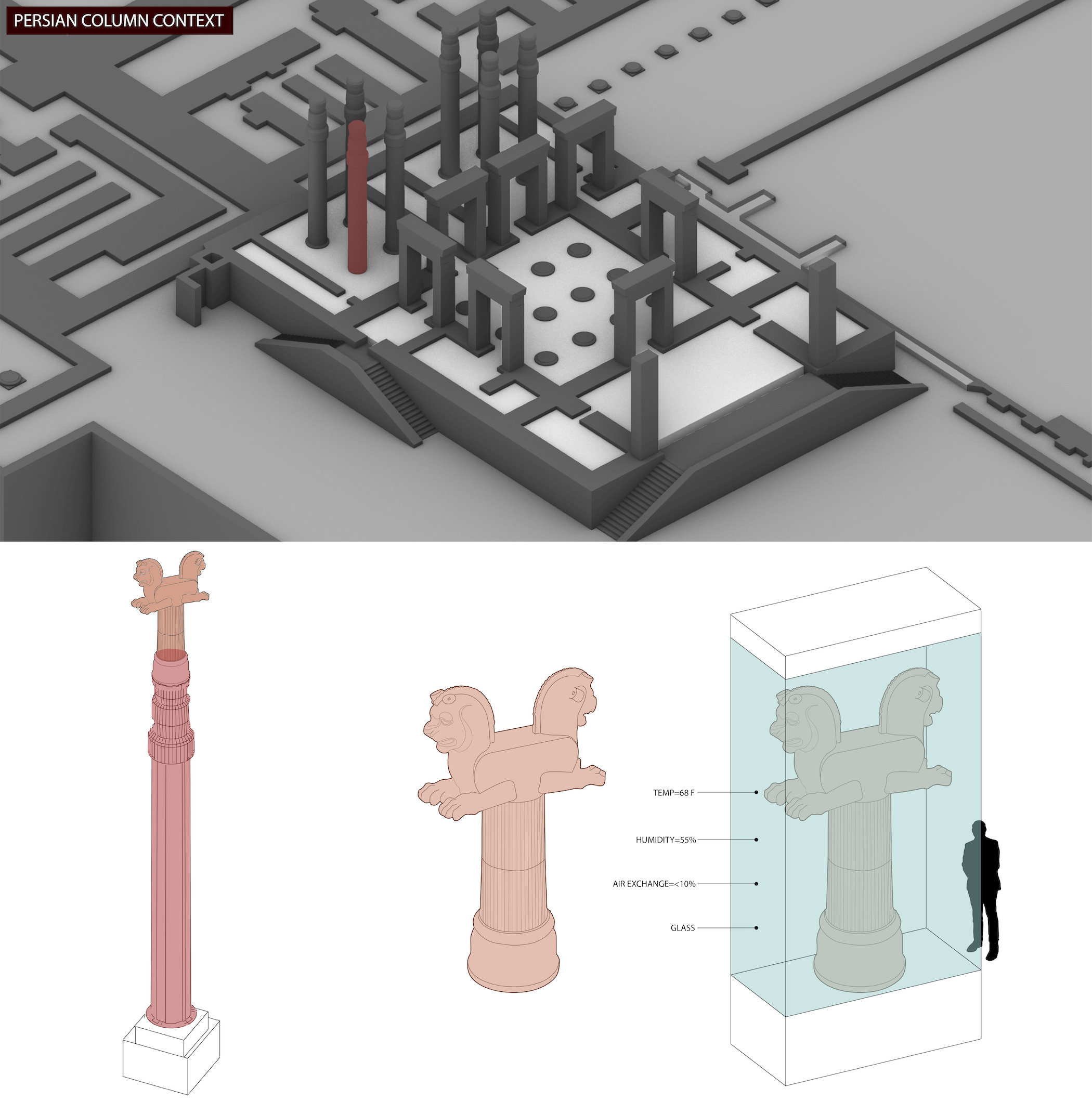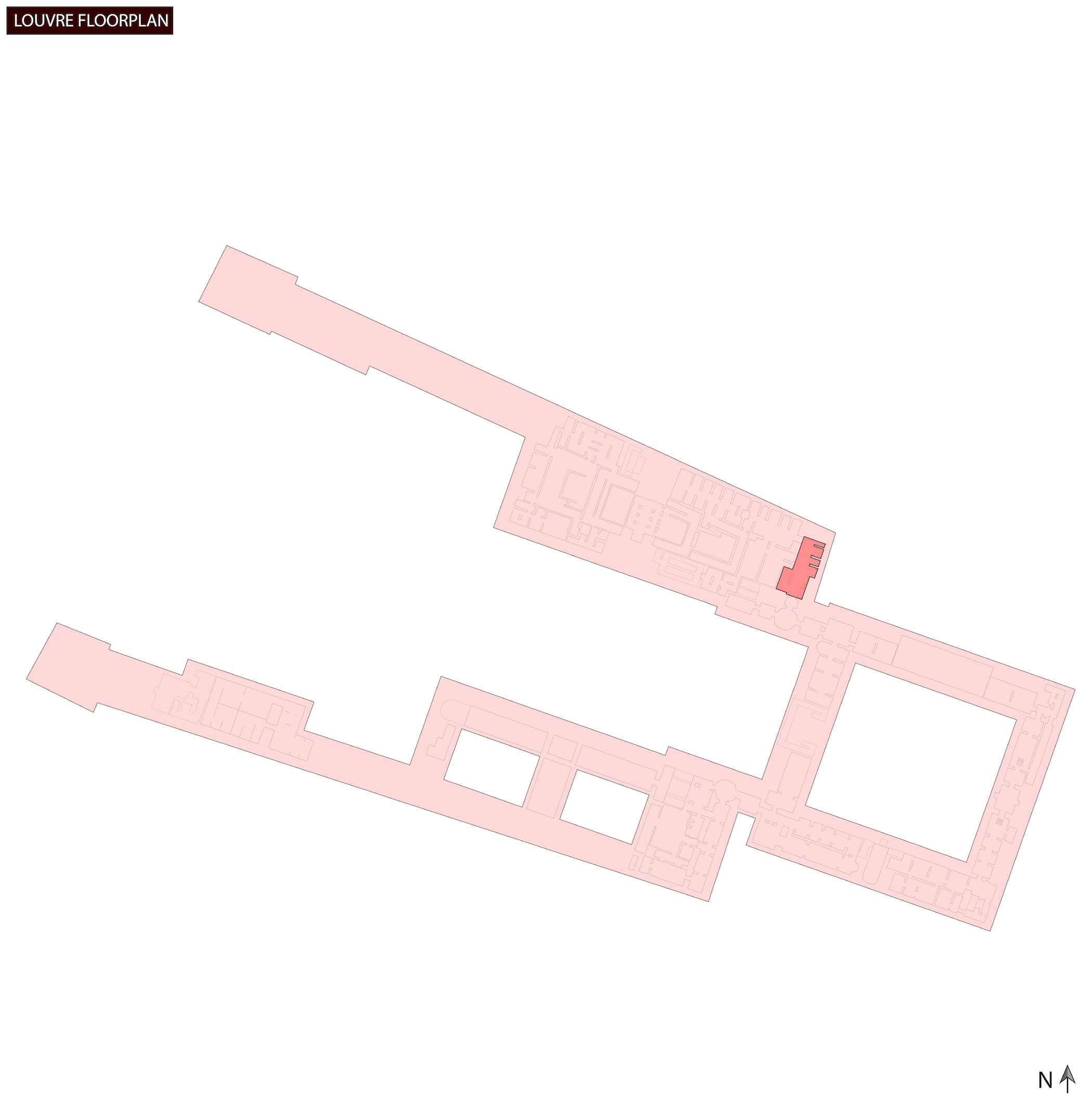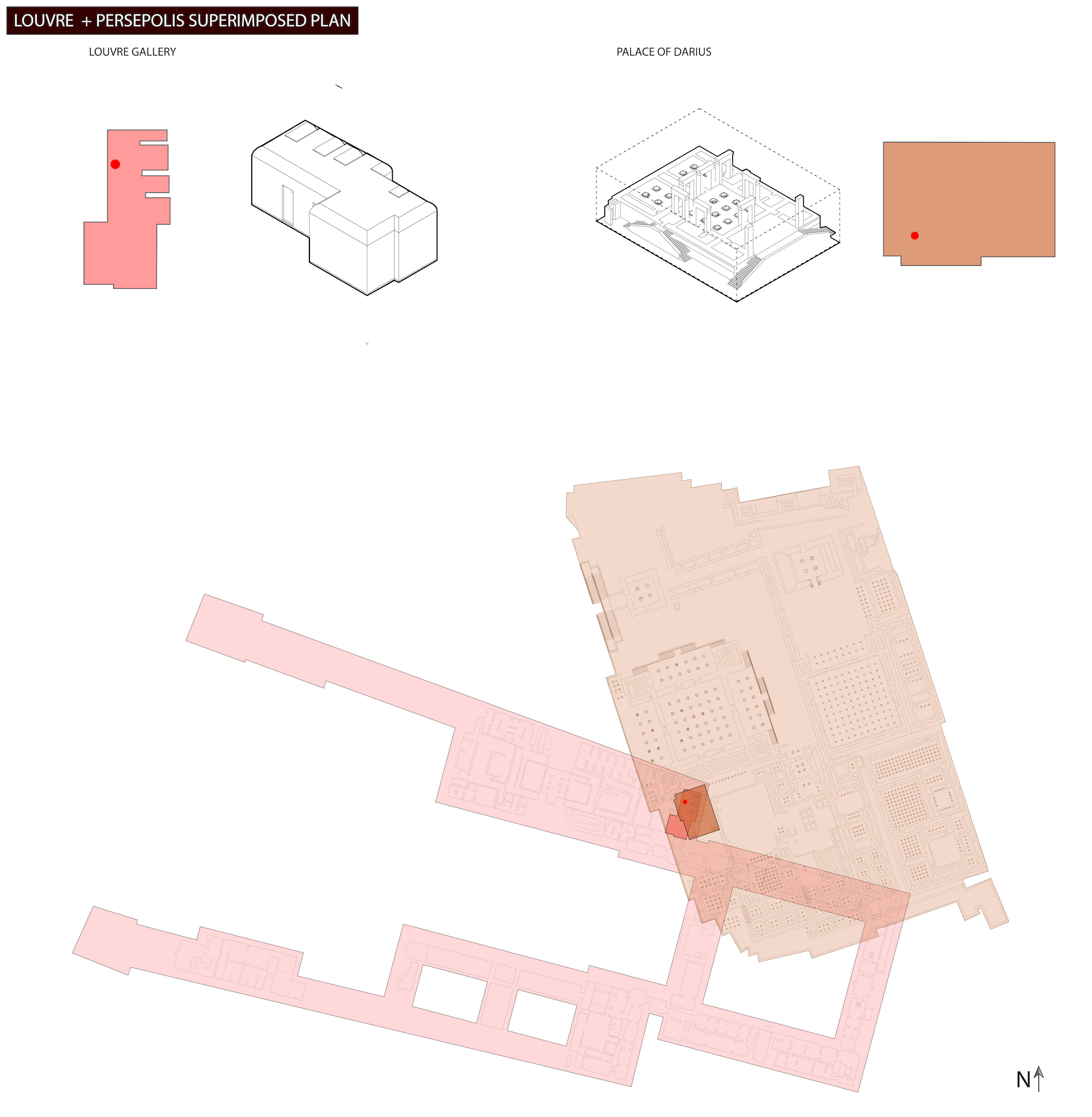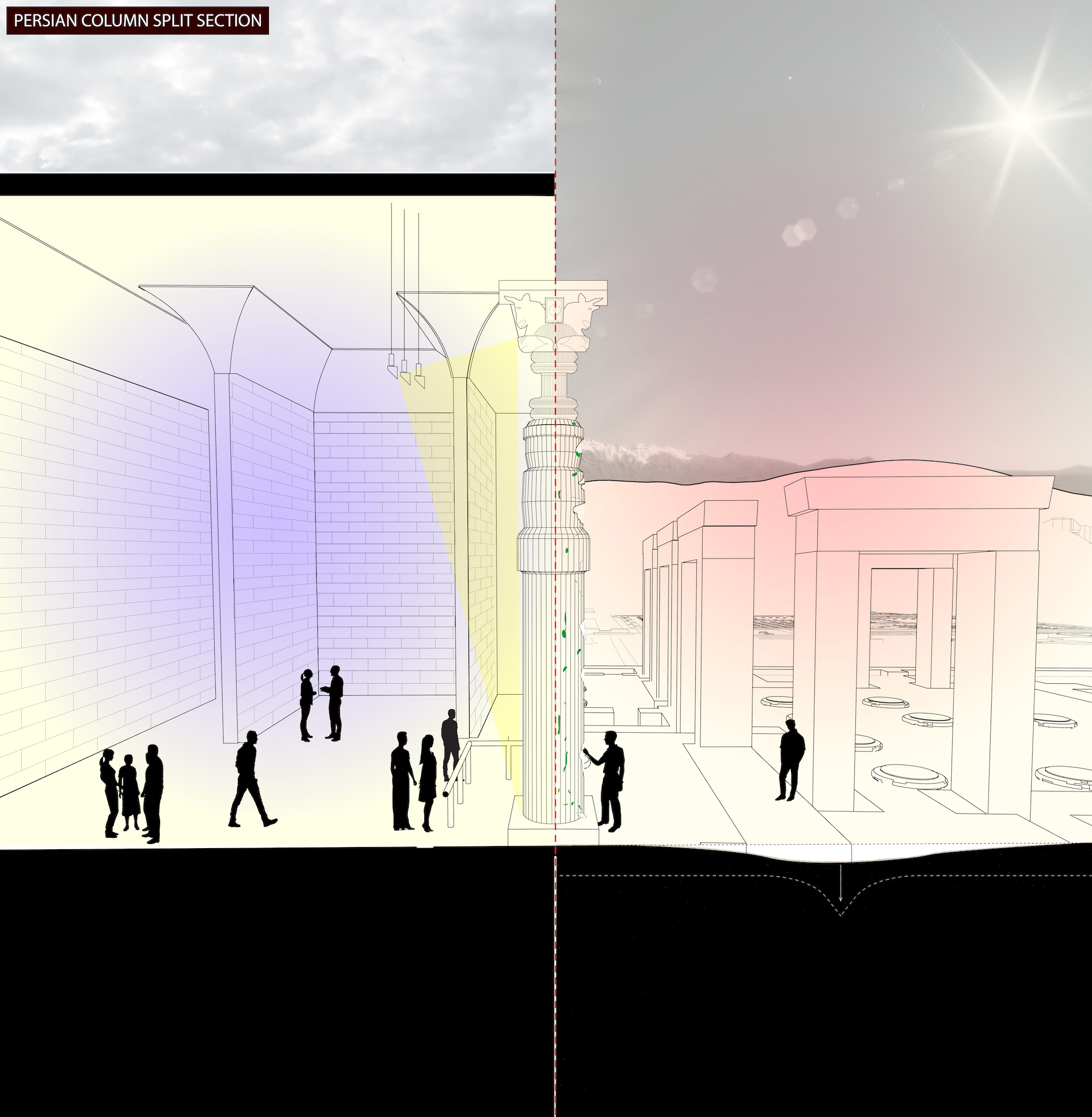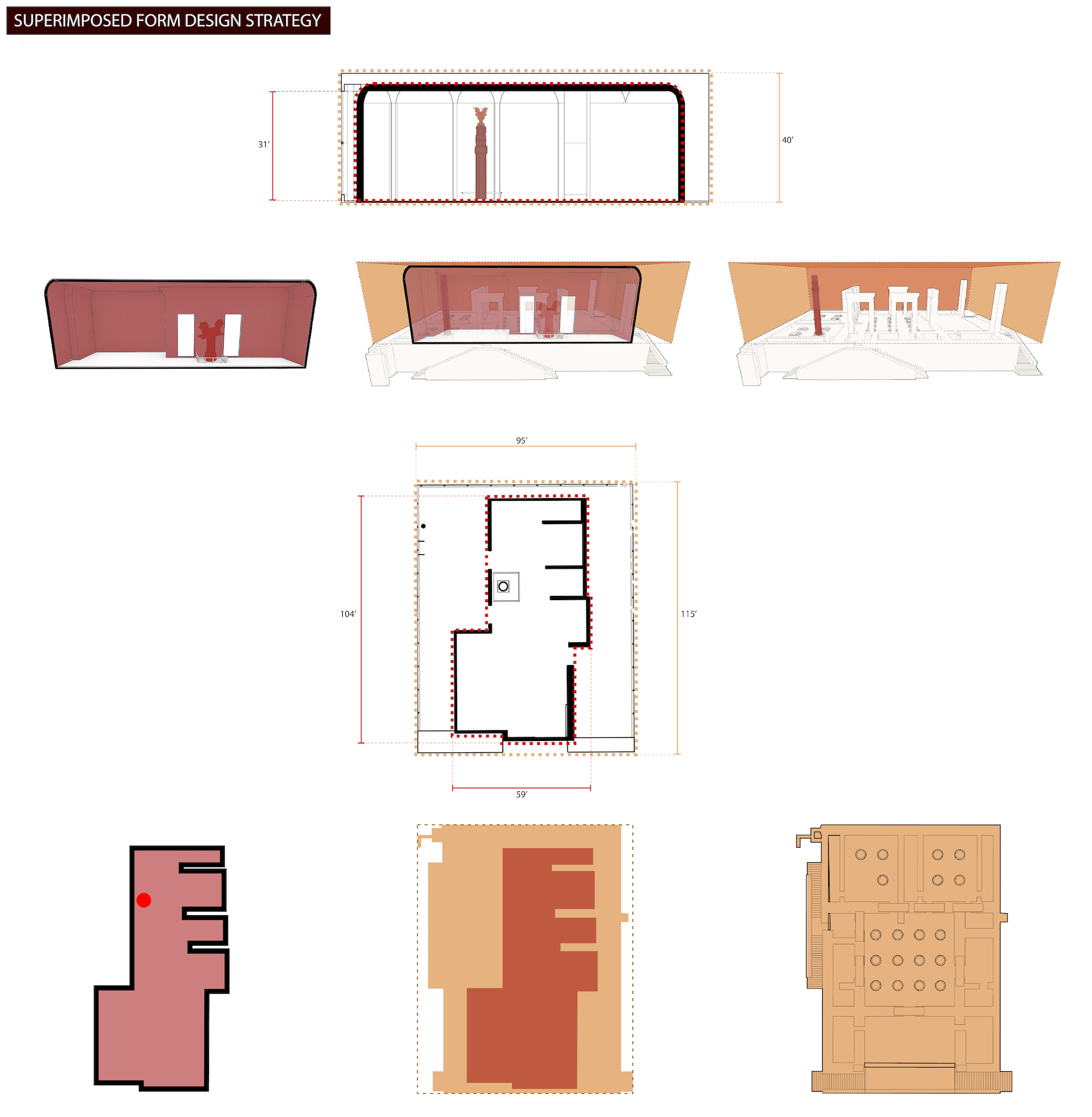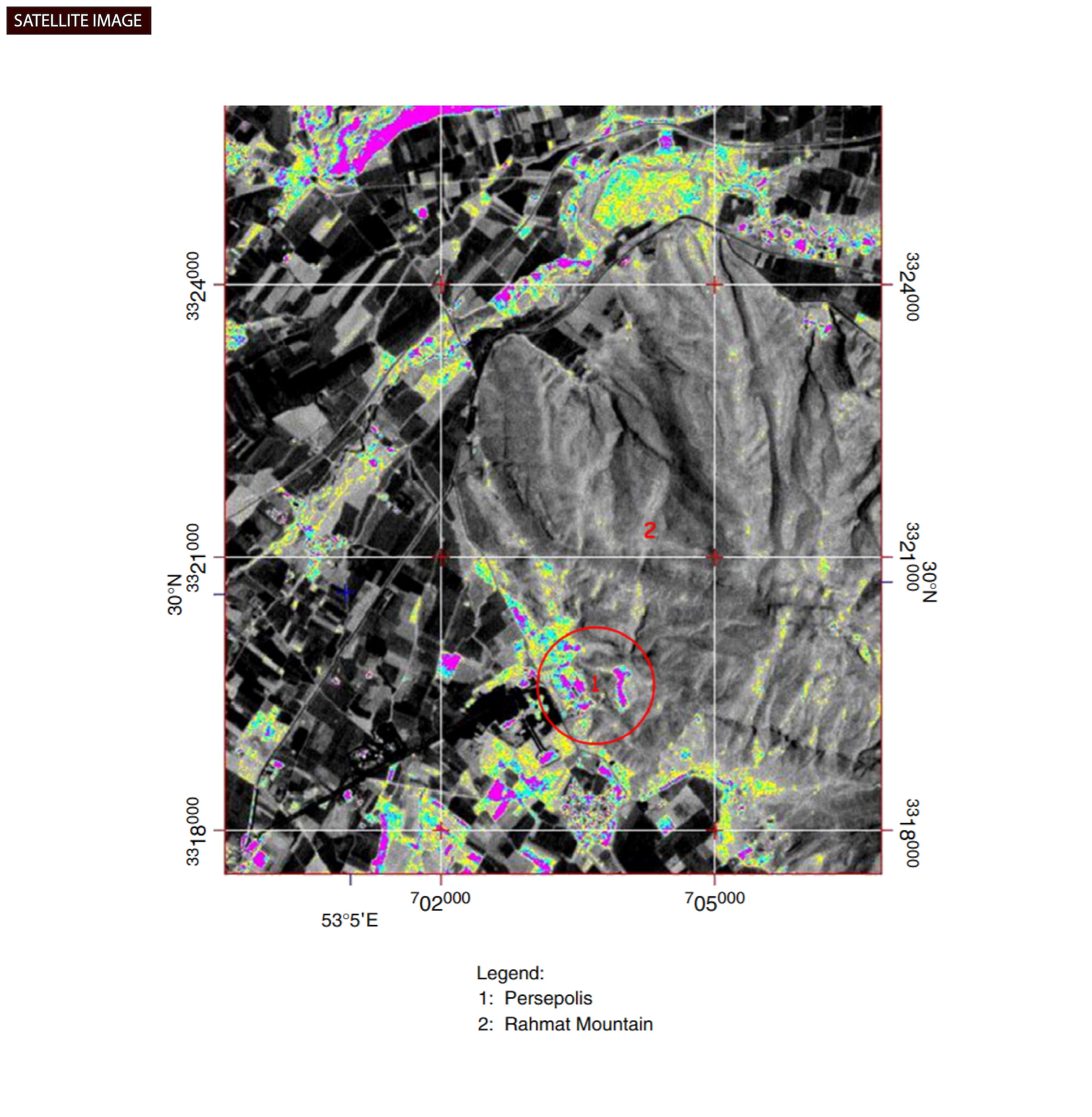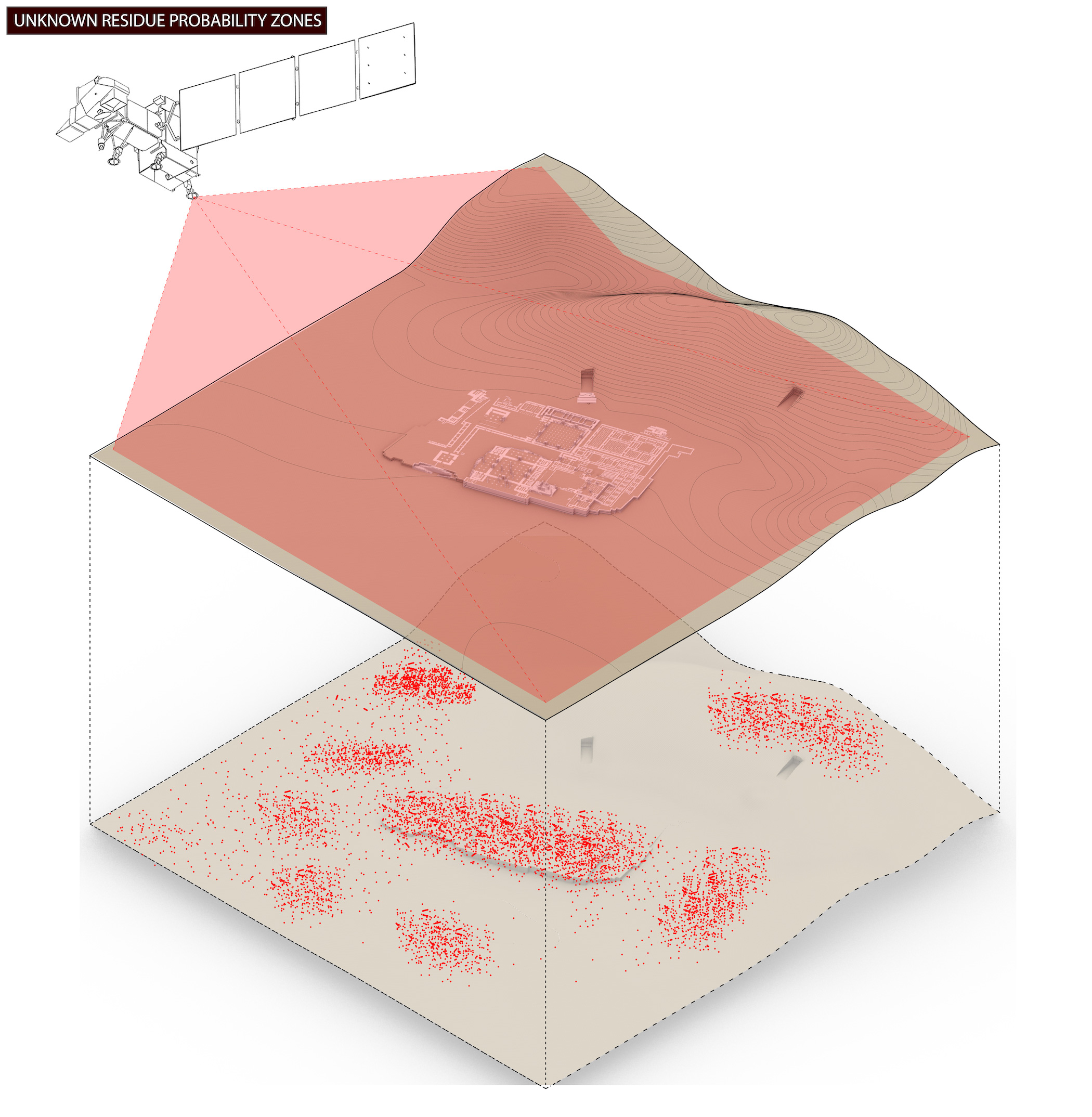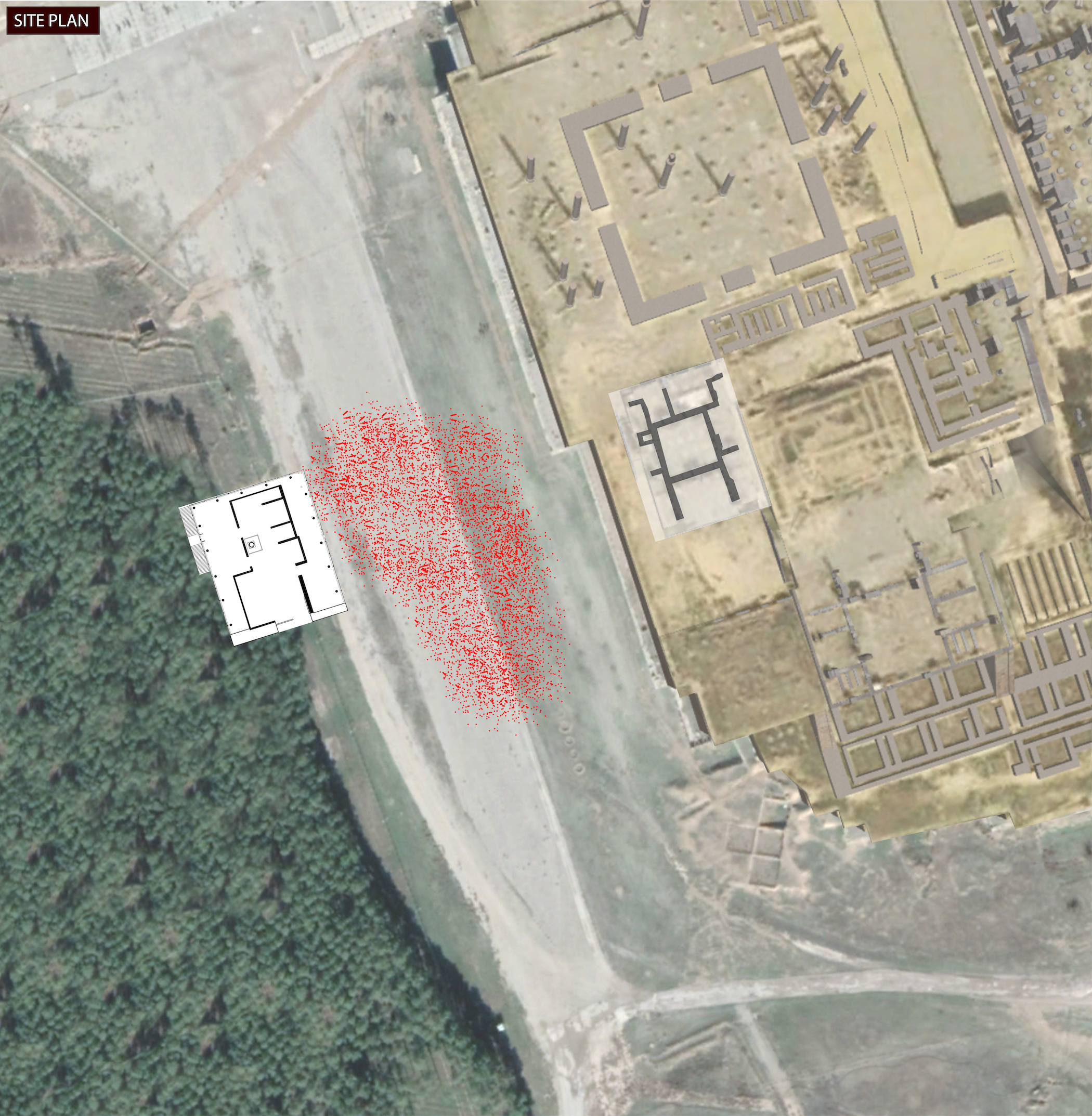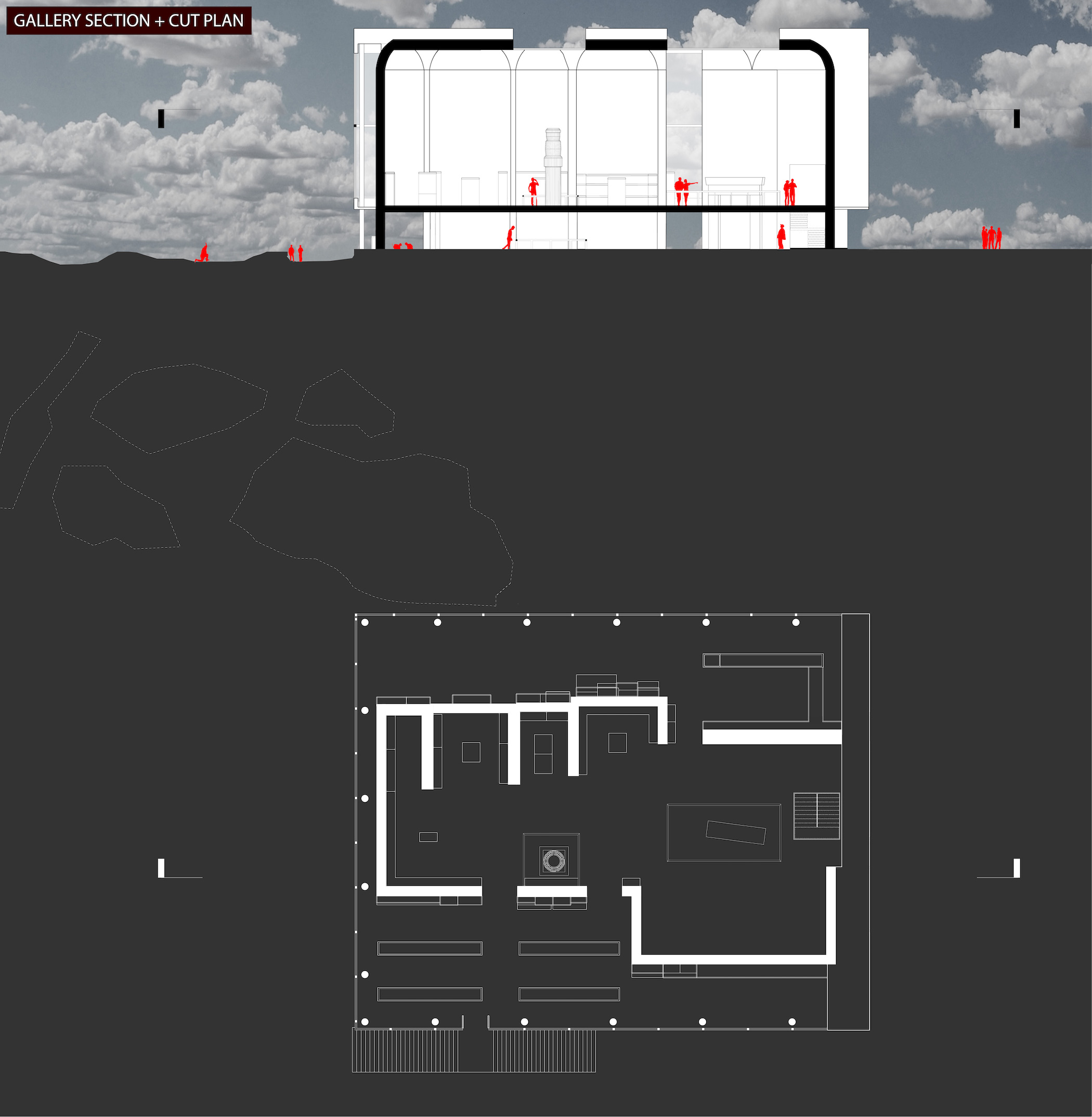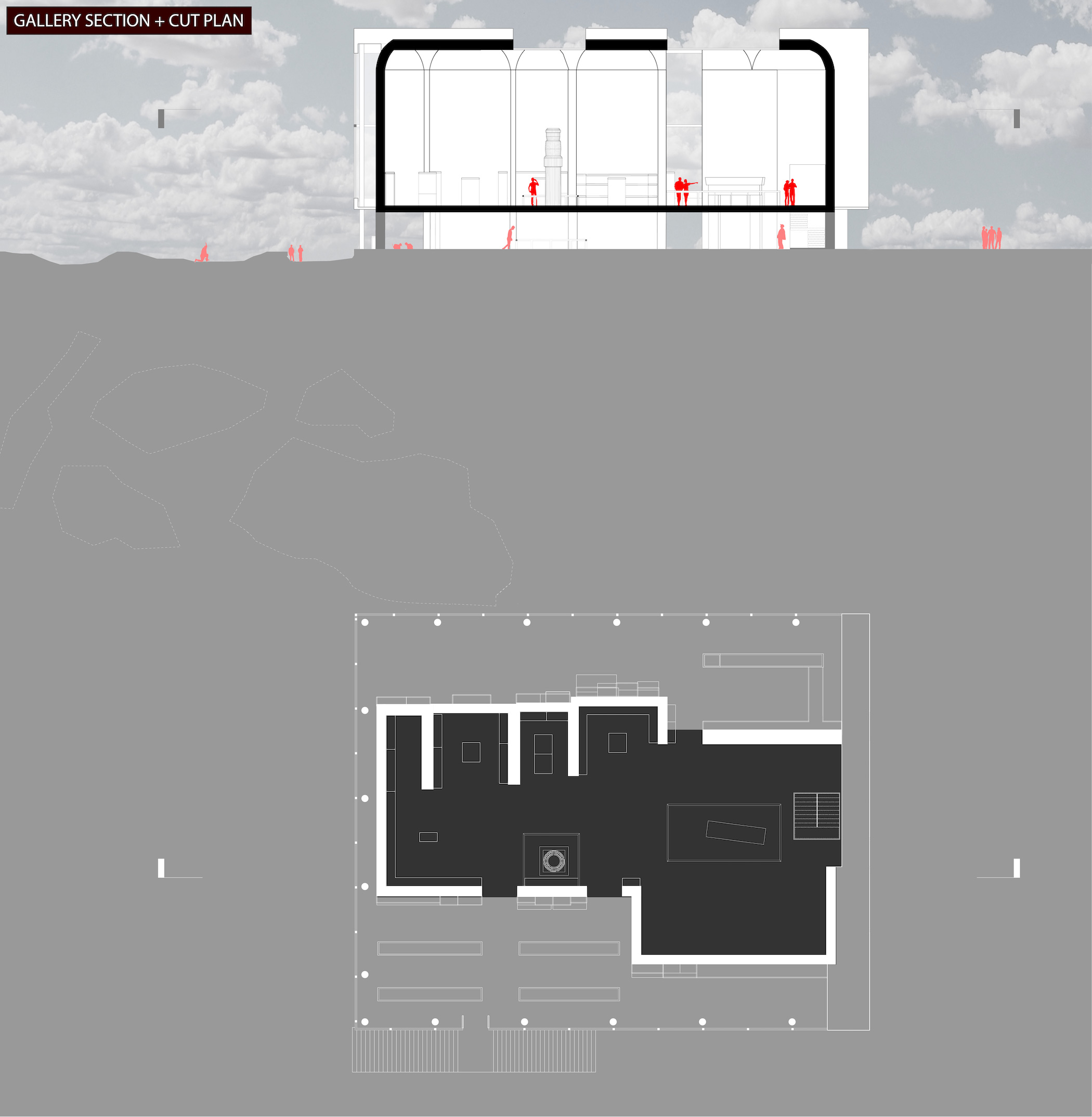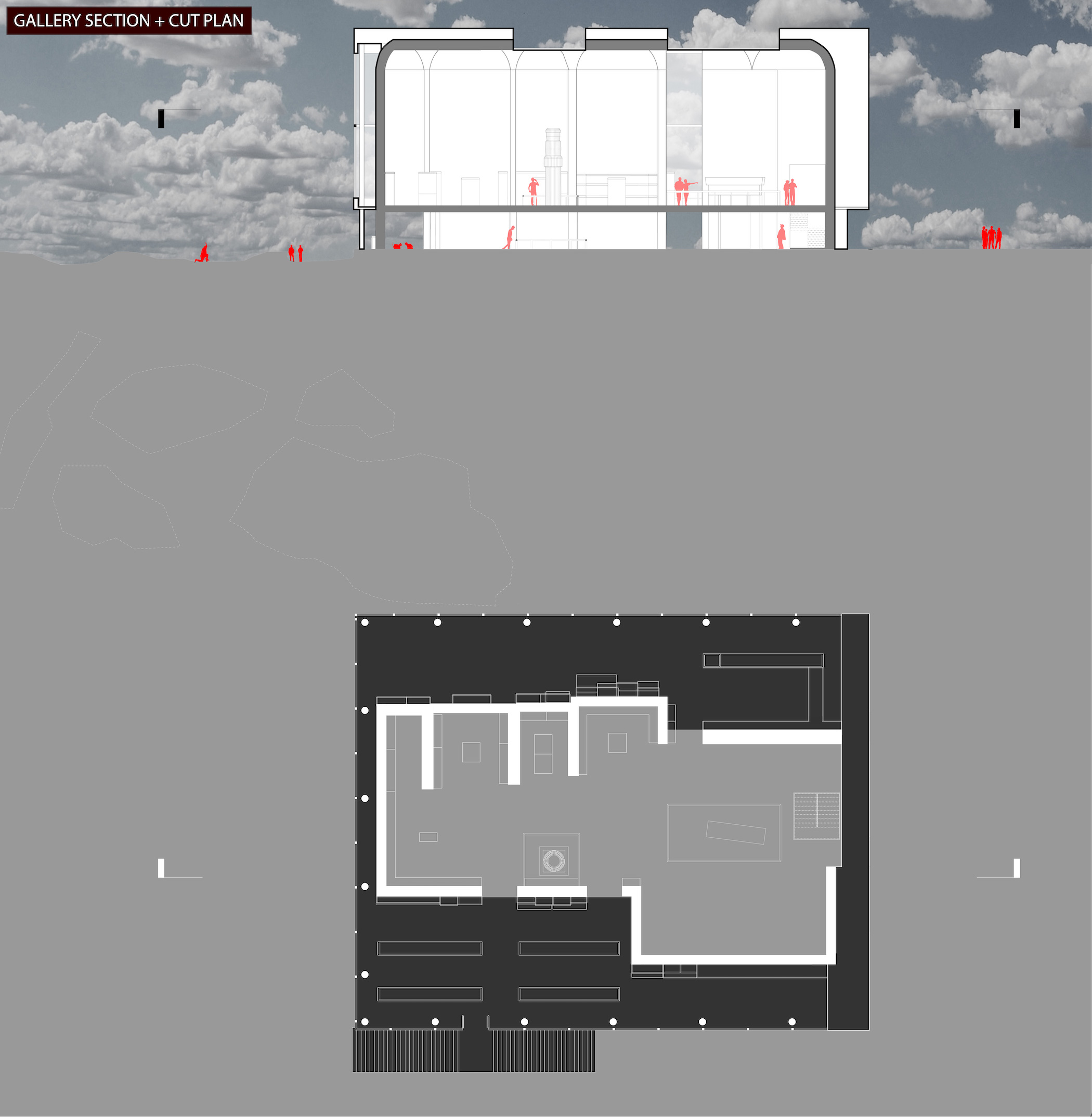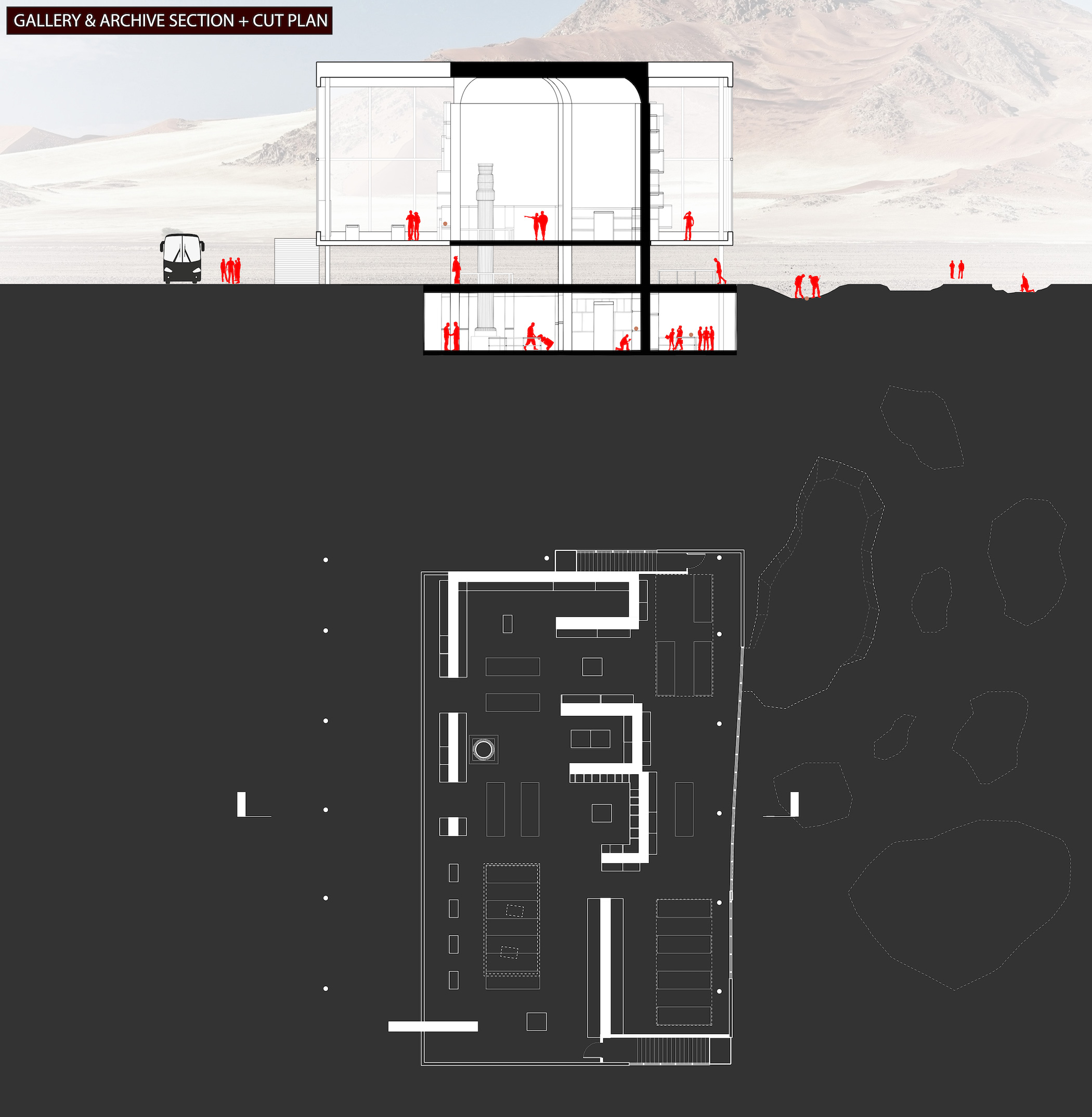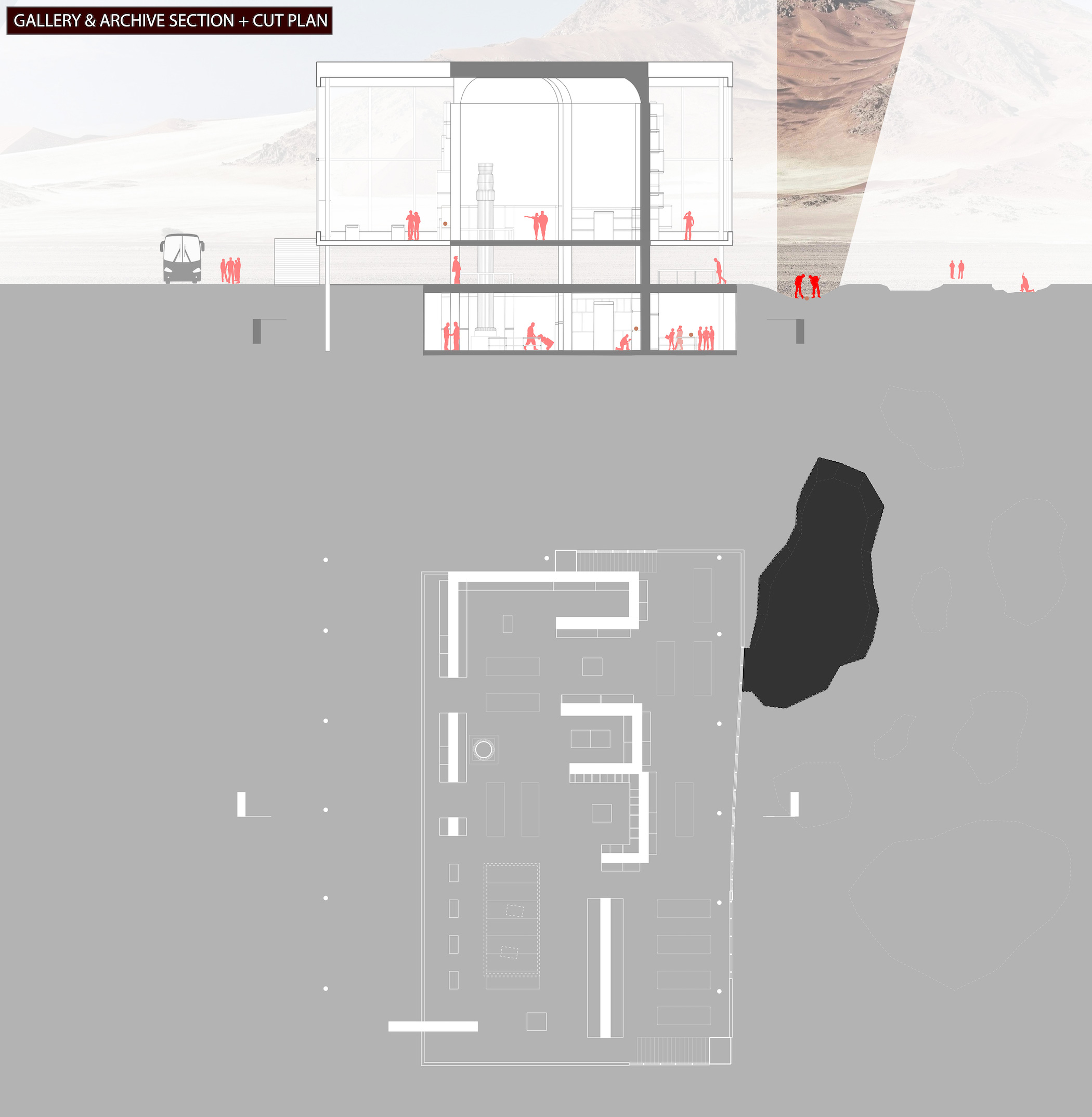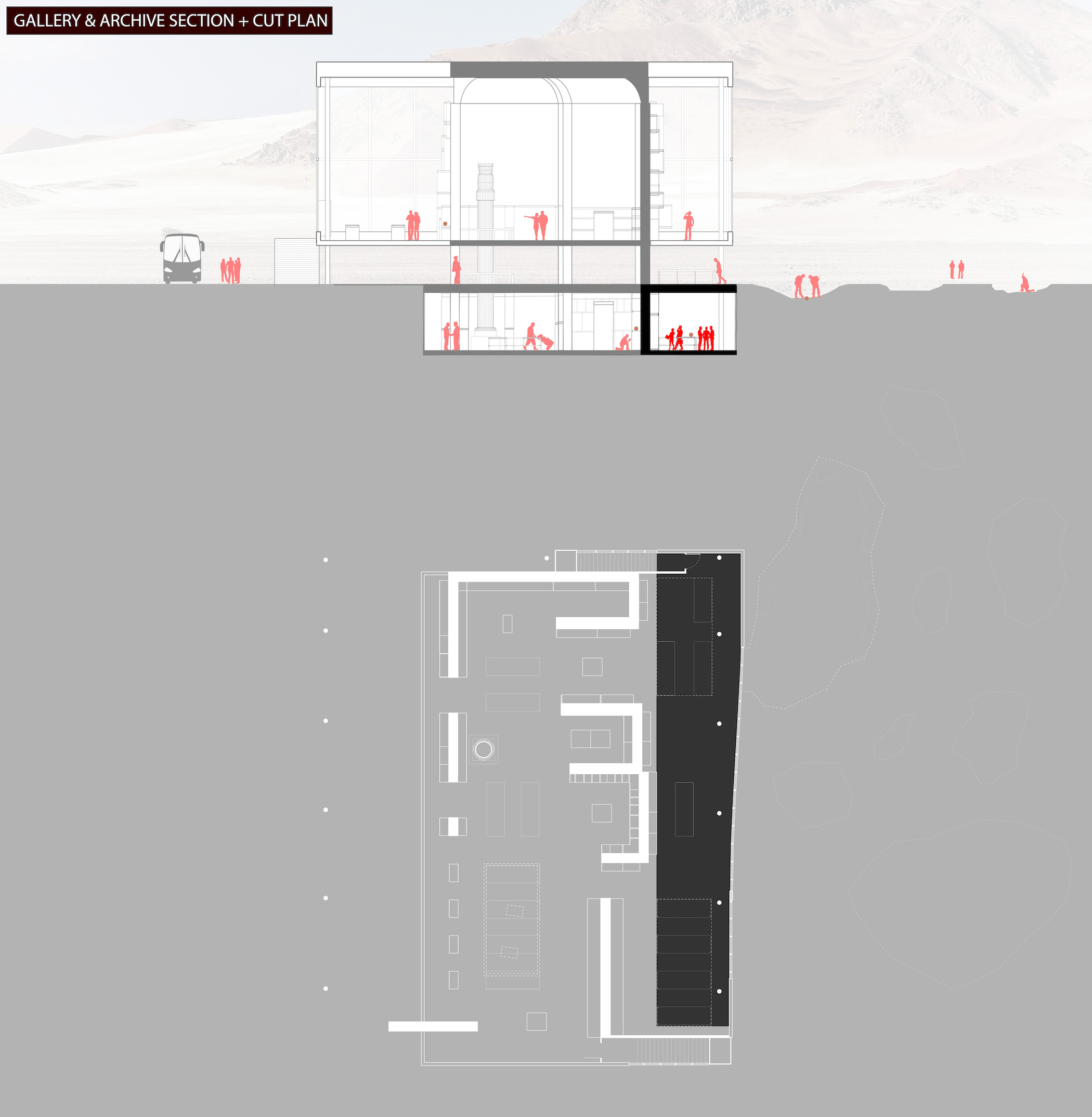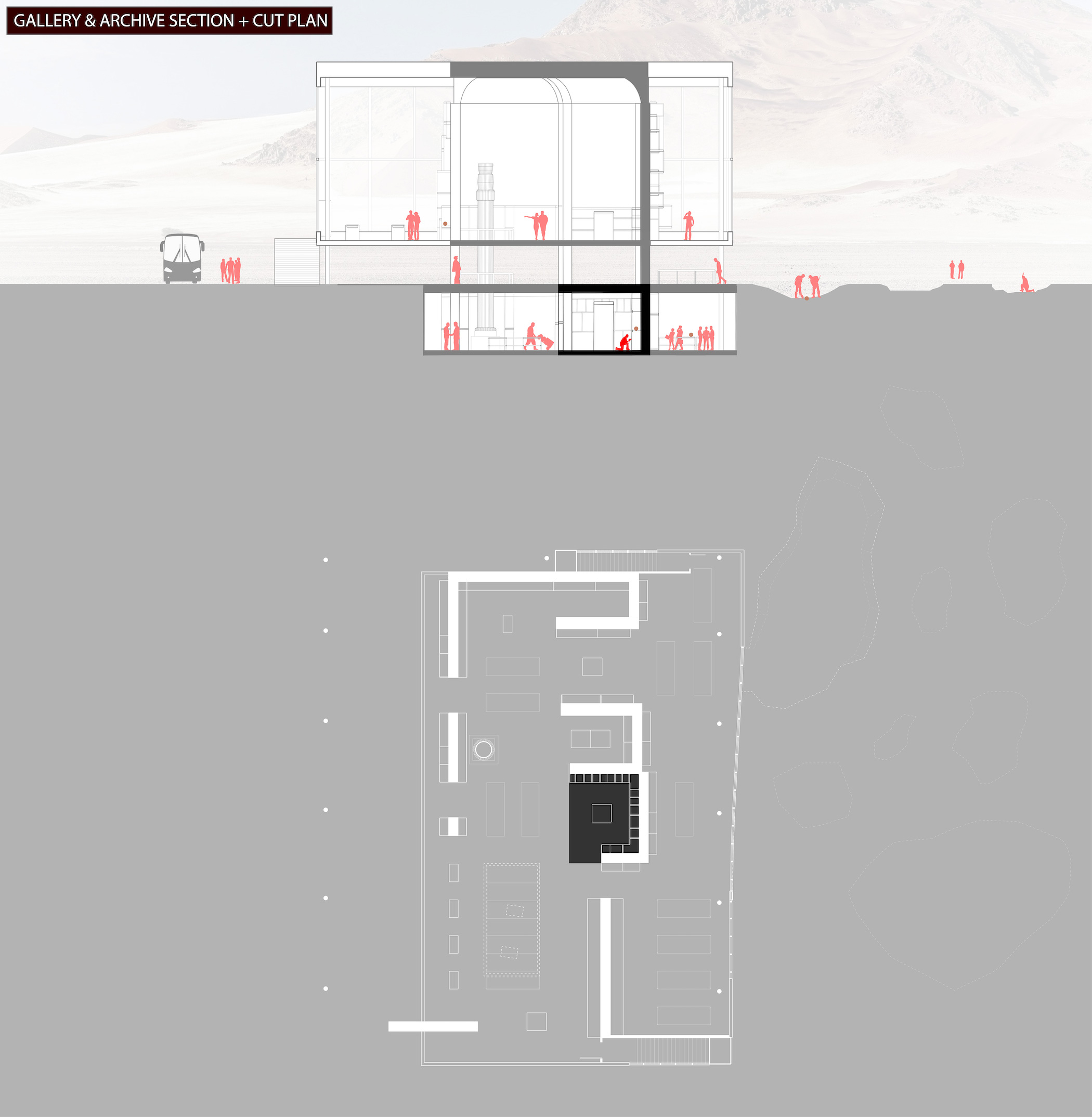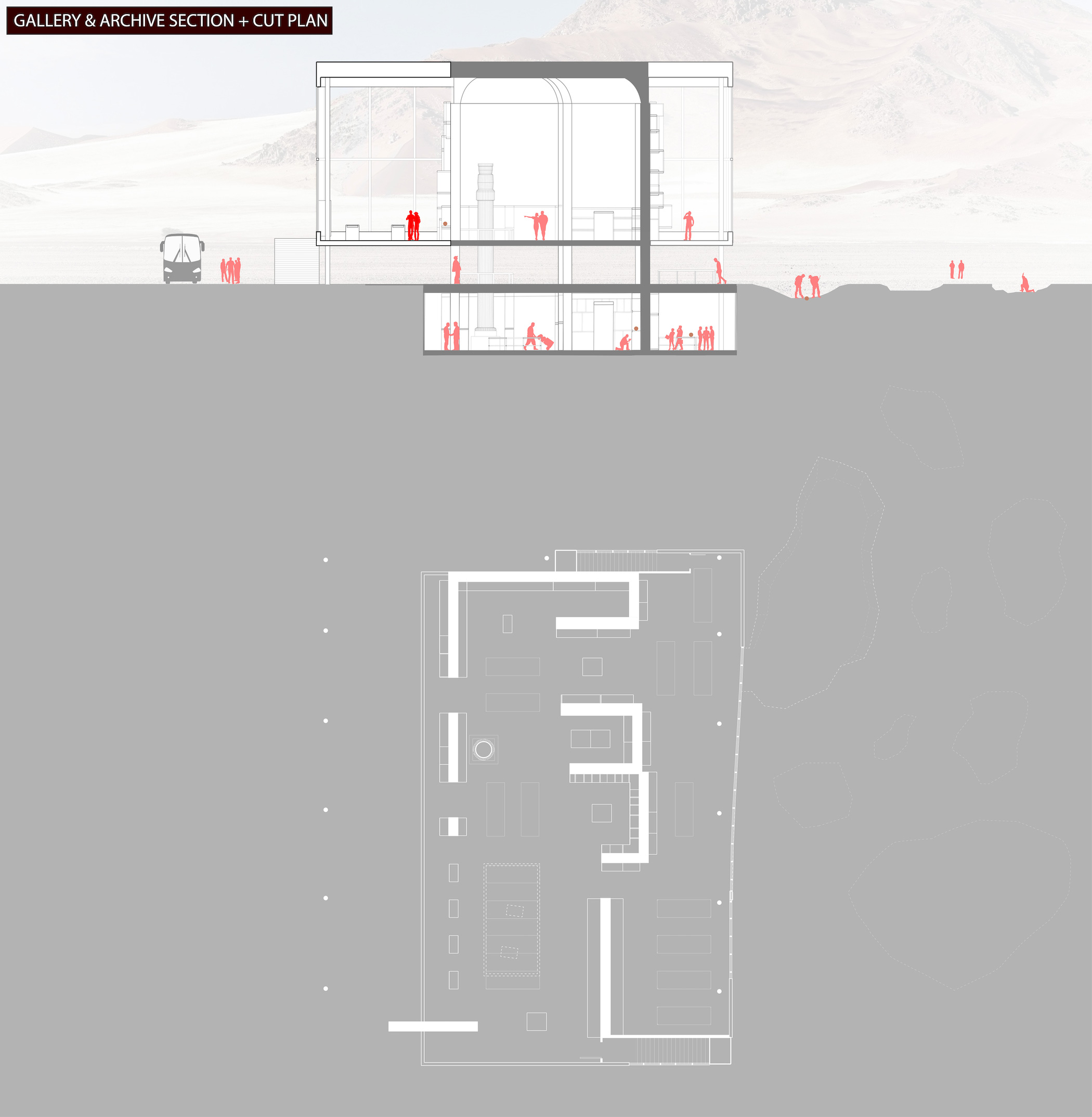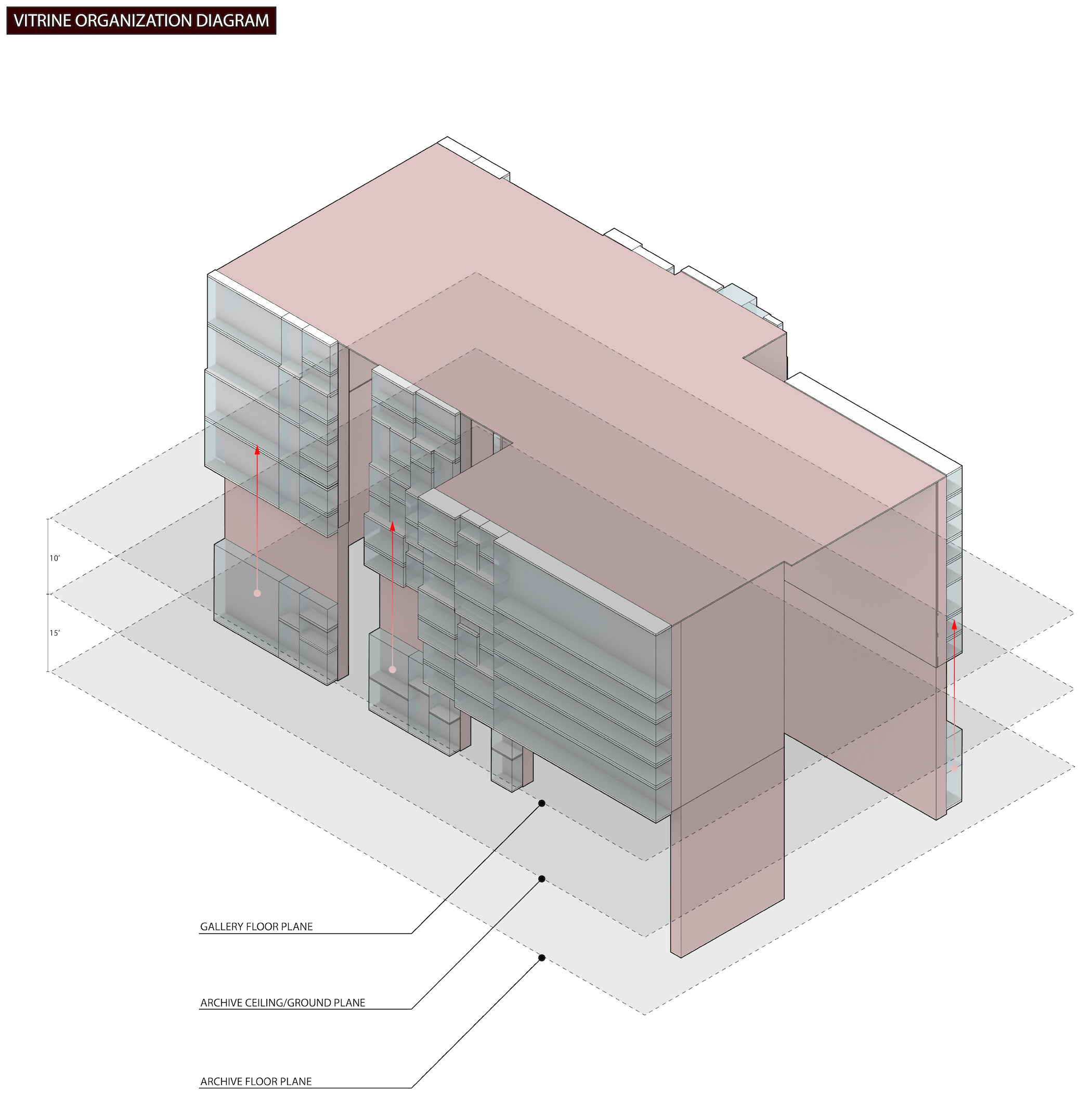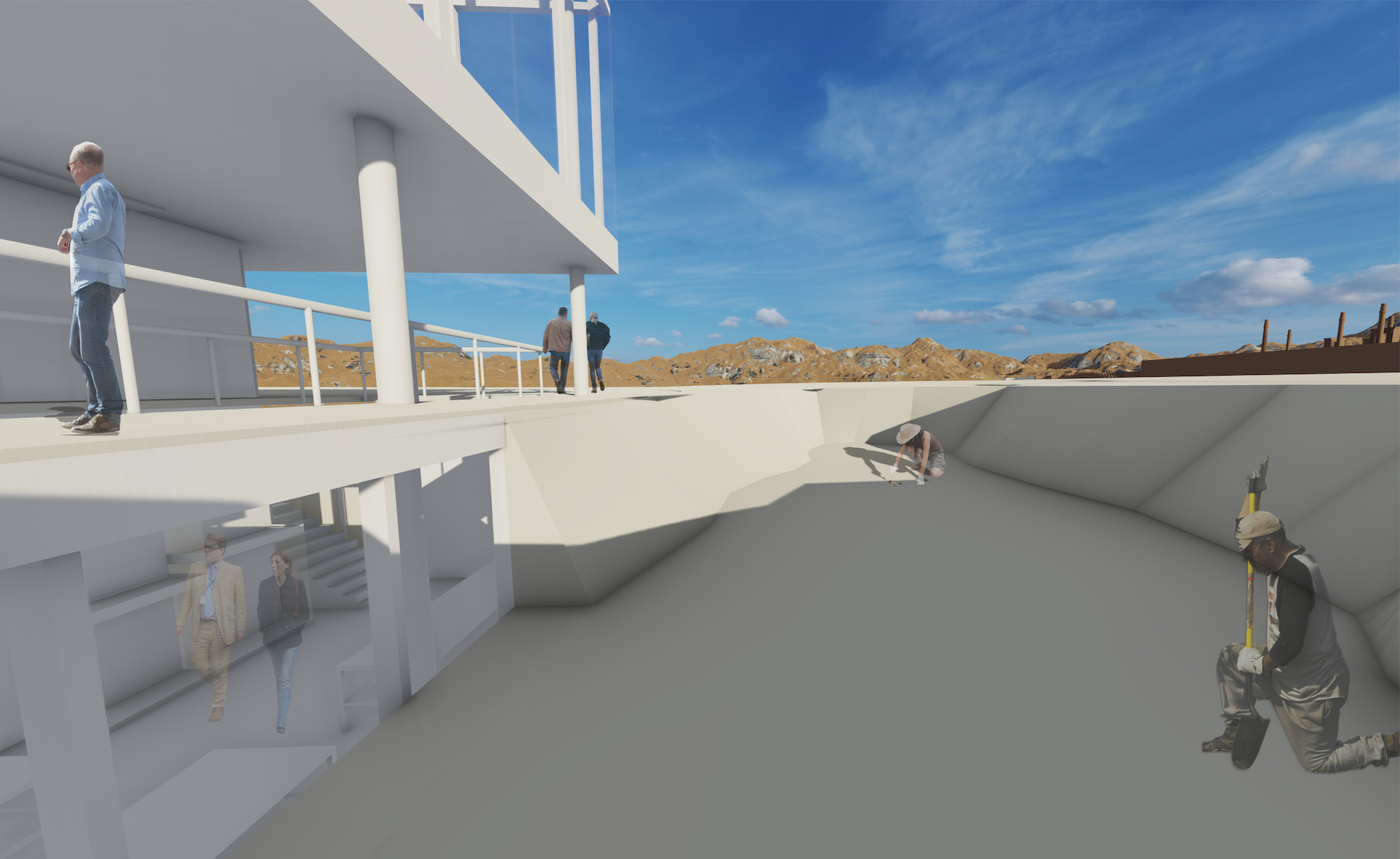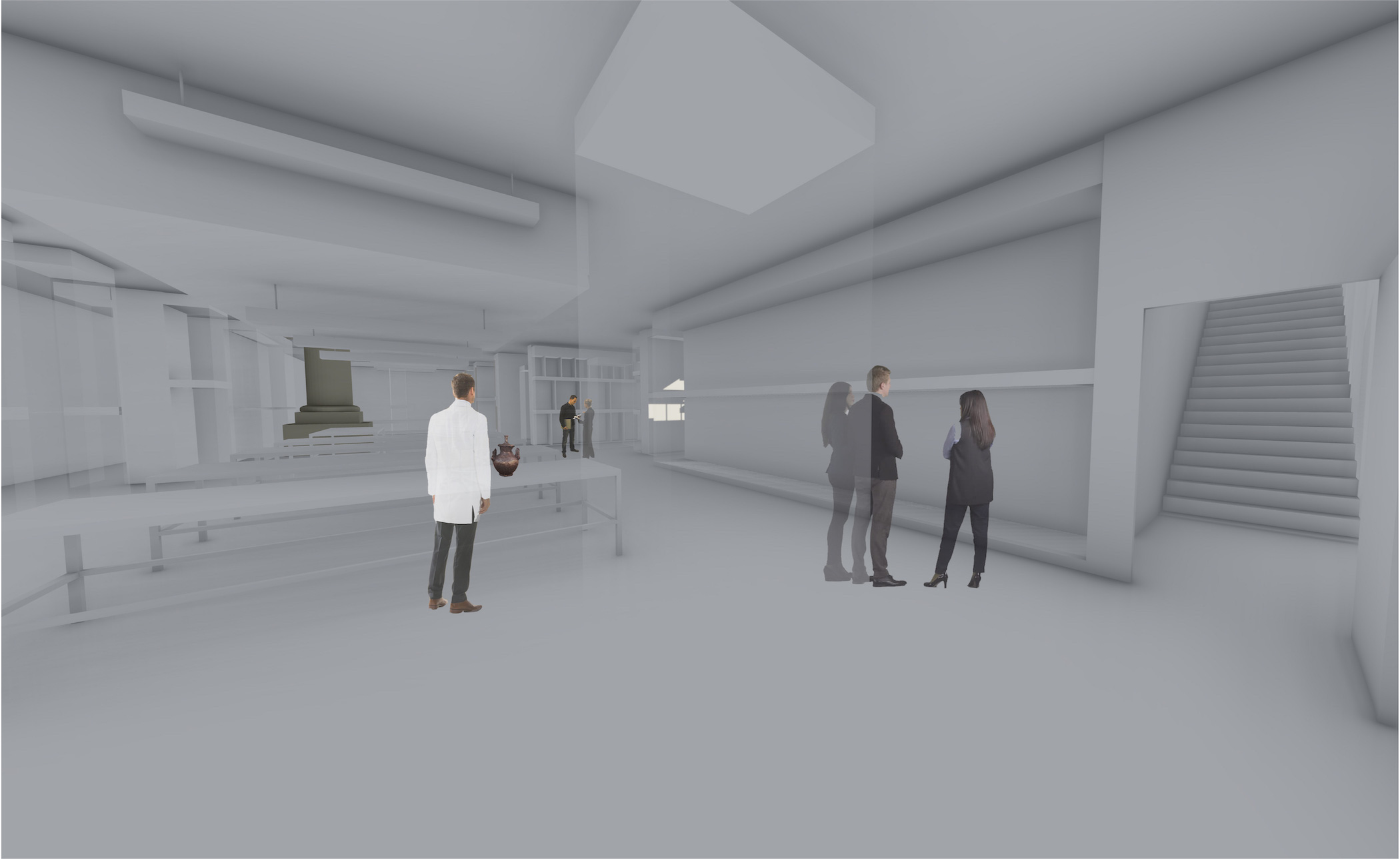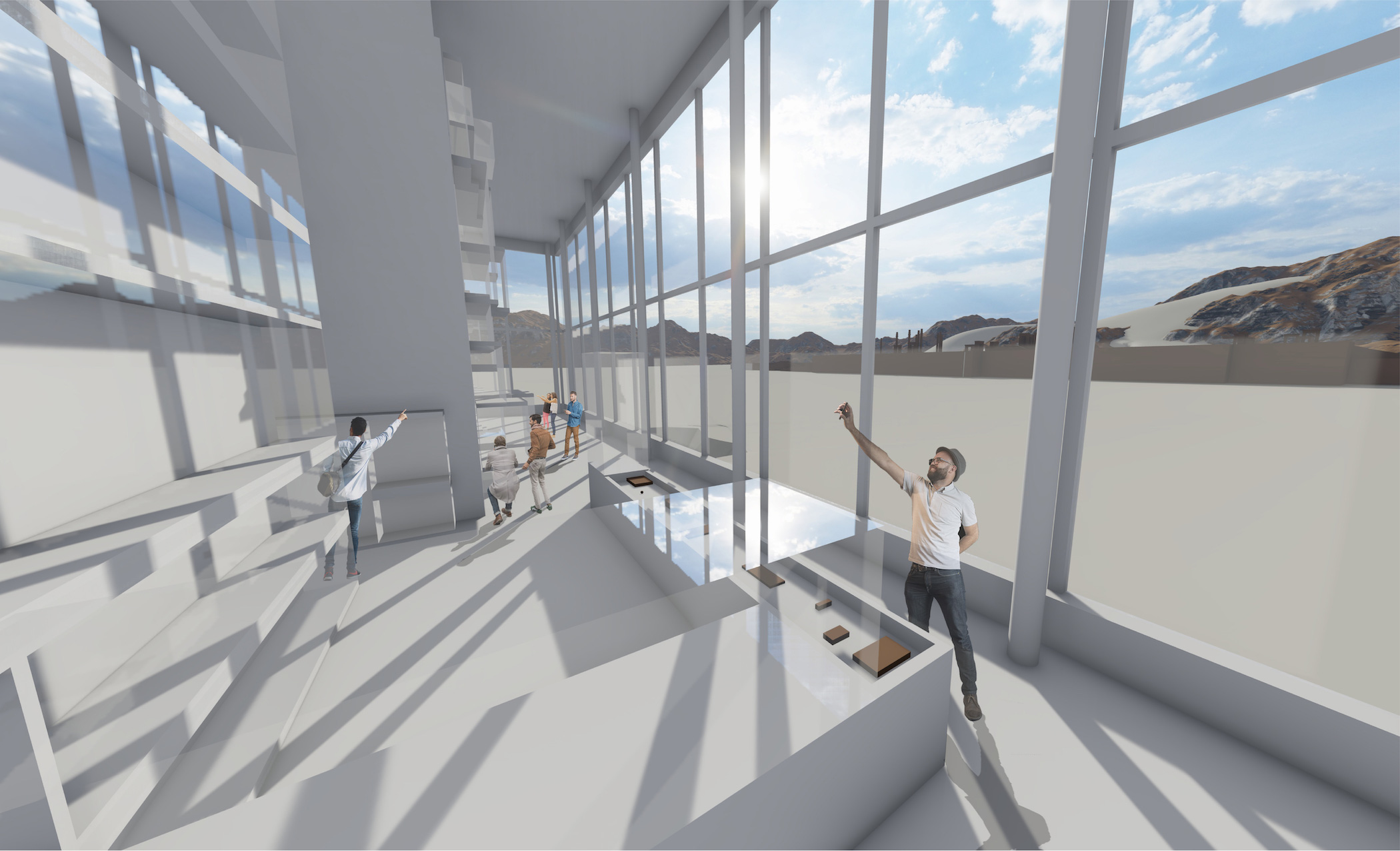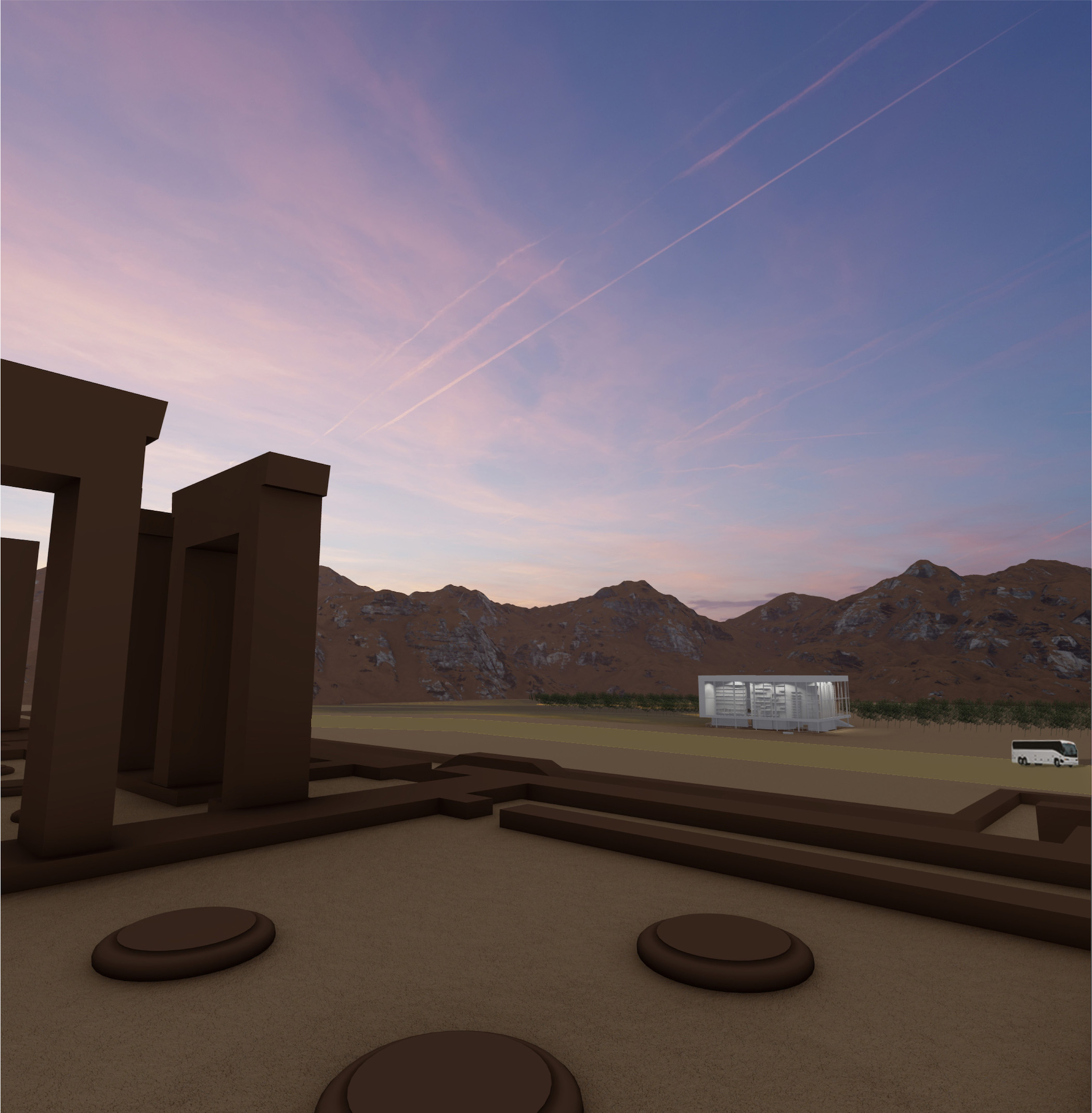Repatriating and Preserving Persepolis
This project repatriates artifacts of the Iranian UNESCO World Heritage site, Persepolis, next to satellite-defined high probability zones of undiscovered residue around the ancient site. The design represents the superimposition of past, present and future. The primary repatriated artifact, the Persian Column, is located within the form and protective elements of its current gallery, the Louvre Paris, which is then fit in scale within a modern recreation of the artifact’s former location, The Palace of Darius. The exterior shell is a glass enclosure around the thick masonry construction of the inner Louvre gallery shell, which are both sized to their actual scale. It boasts views over the ruins with the ability to house over 500 to-be-repatriated artifacts of the 4,000 taken from Persepolis. An underground archival space is used to clean, index and store the artifacts which are excavated from the adjacent high-probability zone. The protective vitrines become the connecting language between the preservation and repatriation of artifacts, as they create a vertical wall typology that connects the different spaces of the building and fragments of what was once “the wealthiest city under the sun”, whether found fifty feet away or five thousand miles away.
